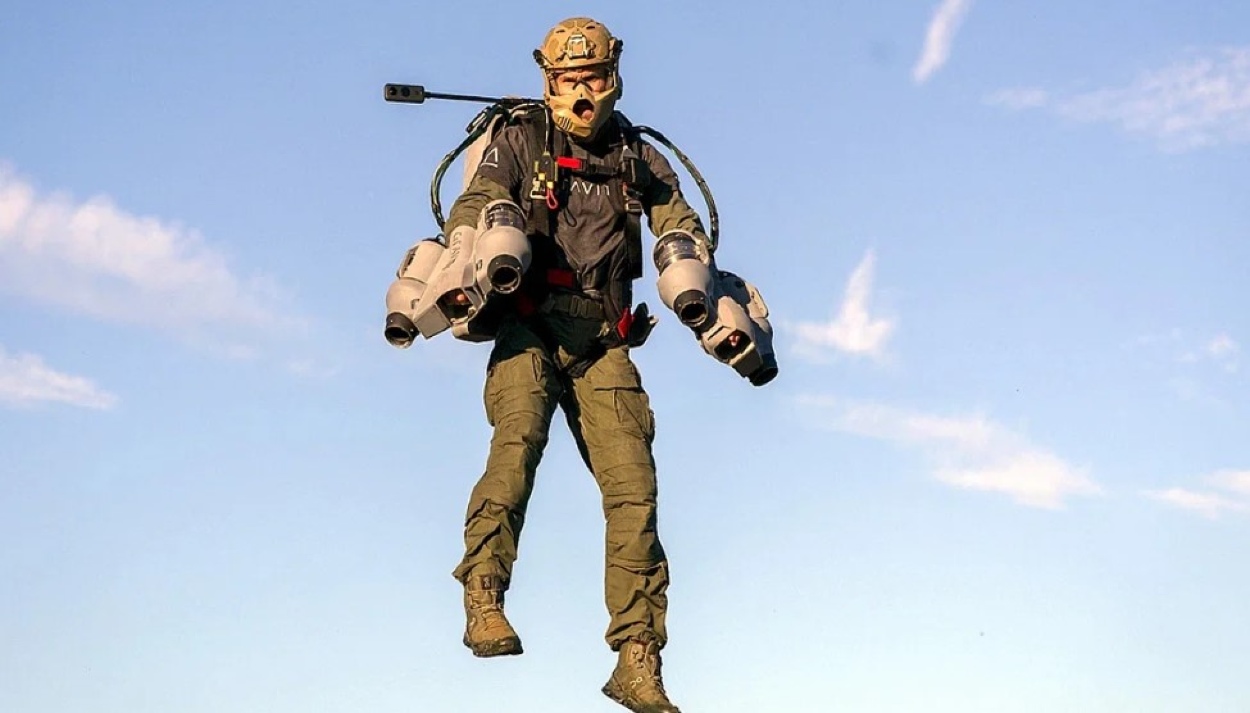The Indian Army is turning its soldier into ‘Iron Man’ to bolster its surveillance capabilities on the border with China and Pakistan and use it in terror-infested Jammu and Kashmir. It may soon have soldiers in jet pack suits in semi-urban and urban warfare scenarios.
Jet pack suits propel the wearer in the air through engines running on gas or liquid fuel. According to the January 2023 tender floated by the Indian Army, the jet pack should be able to carry a person weighing at least 80 kilograms. It should be able to fly at a speed of at least 50 kilometers per hour for at least eight minutes.
Recently the Army Airborne Training School (AATS) in Agra got a demonstration from a British company, ‘Gravity Industries,’ owned by ex-marine and innovator Richard Browning. Browning demonstrated the technology, flying it over water bodies, roads, and fields in Agra.
Talking about the employability of these suits, an Indian Army officer posted in Kashmir told the EurAsian Times: “These jet pack suits are coming as an aerial surveillance platform. Its effectiveness will vary from place to place. For instance, it will be less effective in terrain with thick vegetation. Also, the wind factor has to be catered for in higher reaches of mountains.” He asked not to be named as he is not authorized to speak to the media.
By the conversation with the Indian Army official, it appeared that the jet pack suit could soon debut in Jammu and Kashmir.
The Indian Army’s requirements for the purchase mention the suitability of the equipment for desert, marine, and mountain warfare.
Another officer pointed out jetpacking wouldn’t just be about propelling through the air. The soldier can be equipped with other technologies like infrared goggles to scan thick vegetation to identify enemy combatants.
🔴British Firm #GravityIndustries gave a capability demonstration of its #Daedalus Flight Pack to the #IndianArmy in Agra. Indian Army aims to procure 48 jet packs.
🎥 Video : @chiraggupta1969 pic.twitter.com/vl6INYojnz— IDU (@defencealerts) February 27, 2023
The military strategists are also looking at jetpacking as another significant disruptor in the tactical battle space, akin to the drone technology on the battlefield. The technology can be used as a force multiplier to counter terrorists in urban and semi-urban settings.
Gravity Industries developed the military version jet suit. It was the first manufacturer of the jet suit that demonstrated its military use during a NATO mountain warfare rescue exercise held in Slovenia in December 2021.
The need for this innovative technology comes in the backdrop of the Indian Army being involved in skirmishes with the People’s Liberation Army along the Line of Actual Control between India and China. With tension between the two countries rising, the jet pack would act as a force multiplier for soldiers at high altitudes.
According to the company, the jet suit is powered by five gas turbine engines that generate more than 1,000 horsepower and produce 144 kilograms of thrust, allowing vertical lift of up to 12,000 feet.
It runs on jet fuel, diesel, or kerosene. The technology started for search and rescue and medical rescue operations. But the military is imagining possible scenarios of their employment in specialized military operations.
A marine commando (MARCOS) of the Indian Navy, while talking about the potential employability of these jet pack suits, said: “The jet pack has a niche capability. It is a mode of insertion… one can go against an unarmed enemy or lightly armed location. One can quickly gain vantage points for reconnaissance, intelligence gathering, or placing a sniper.” Also, he points out that the jet pack can be used for quick exfiltration. He, too, is not authorized to speak to the media and hence not named.

The UK’s Royal Navy and the US Marine Corps already use these jet pack suits in various limited roles.
The marine commando also emphasized that the Indian forces are known to deploy their weapons innovatively to get the full value for their money. He cited the example of the eight OSA class missile boats India procured from Russia before the 1971 India-Pakistan war. Each of these 70-ton boats carried four deadly missiles.
They had a top speed of 40 knots but limited endurance. Russia used them for coastal surveillance. The Indian Naval warships towed these boats outside Karachi, where they sank Pakistani ships and set the Karachi harbor ablaze. Thereafter, they made a quick dash out of the range of the incoming Pakistani fighter jets.
- Ritu Sharma has been a journalist for over a decade, writing on defense, foreign affairs, and nuclear technology.
- She can be reached at ritu.sharma (at) mail.com